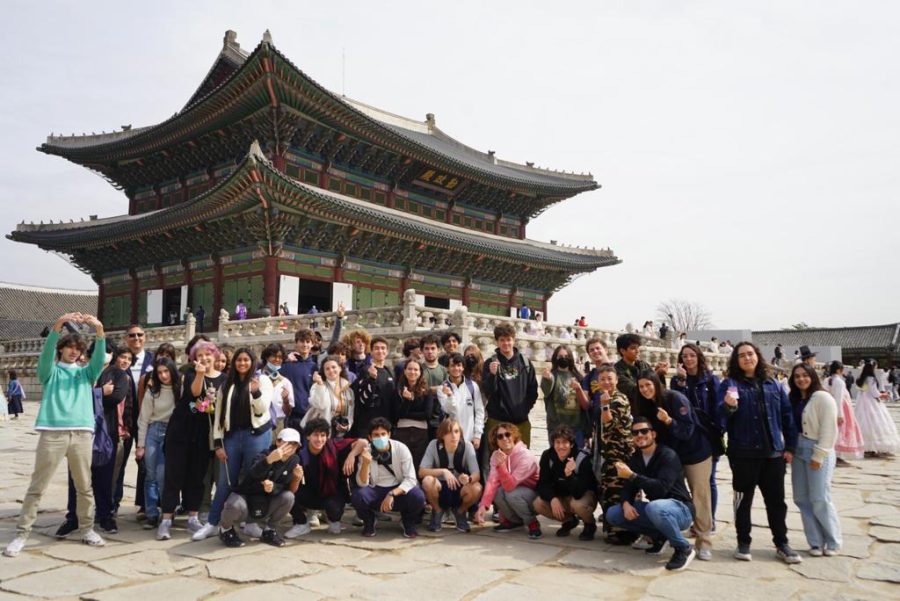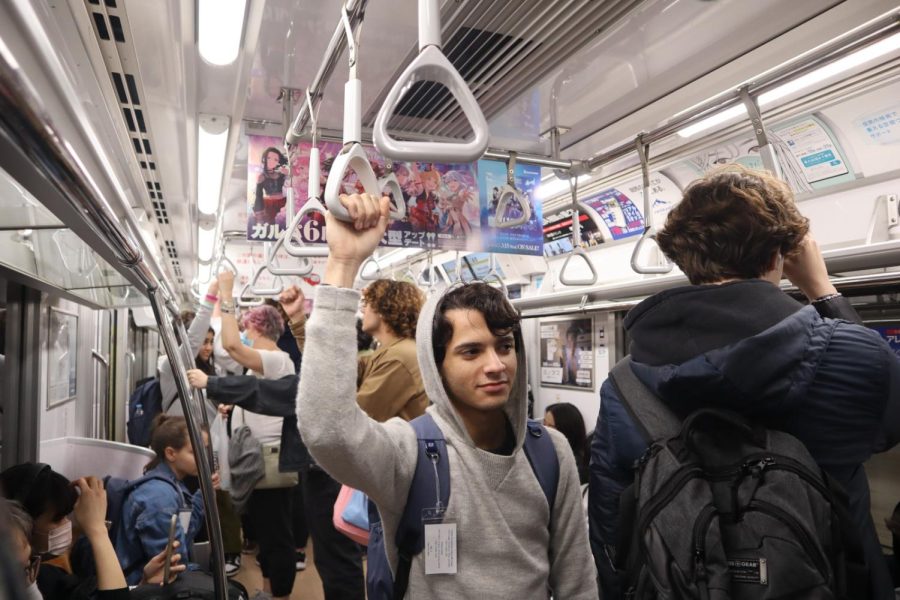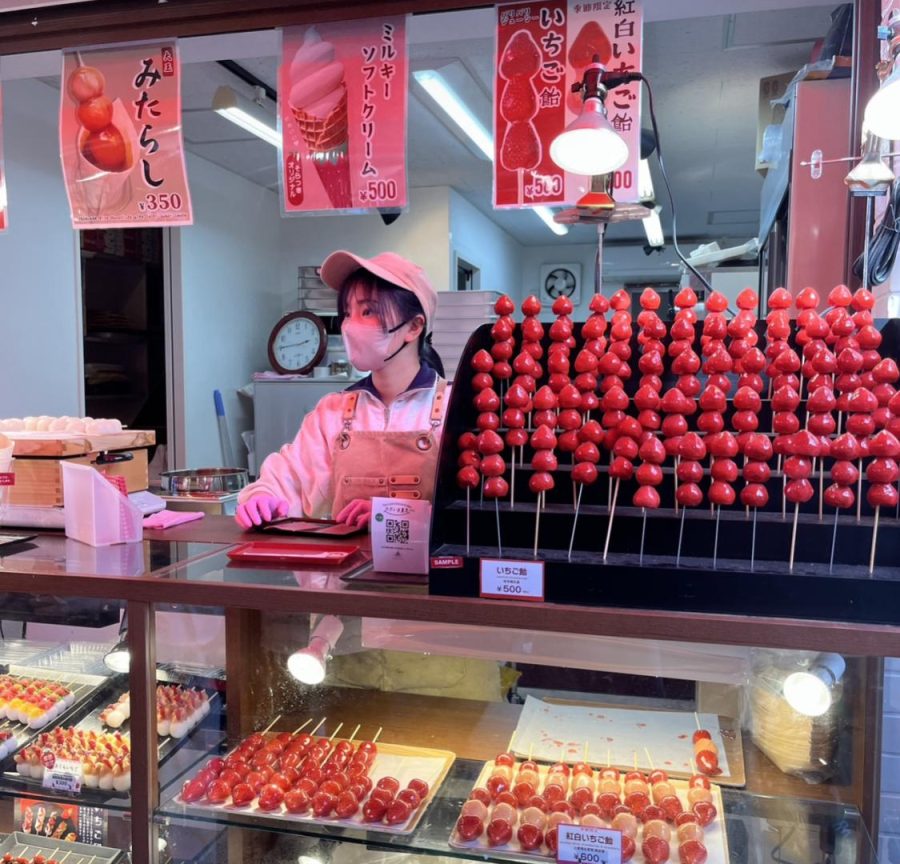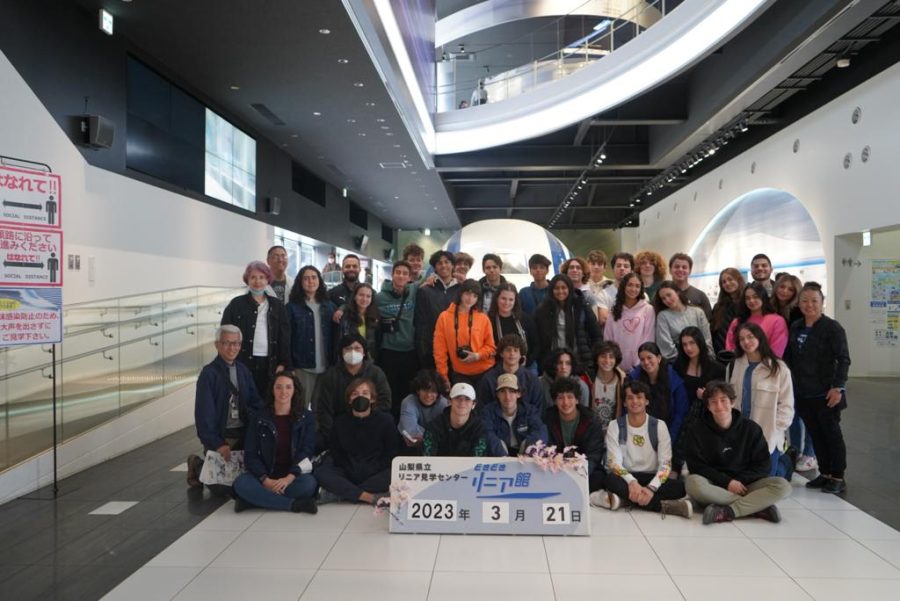The group, led by EF tours and organized by science department teacher Victoria Valdenegro, visited Tokyo and Seoul from Mar. 16 to Mar. 27.
Students Take Spring Break STEM Trip to Japan and South Korea
April 6, 2023
On Mar. 15 students met at the Miami International Airport for an early flight to Houston and then Tokyo. The group, led by EF tours and organized by science department teacher Victoria Valdenegro, visited Japan and South Korea from Mar. 16 to Mar. 27. A total of eight days were spent in Japan and four days in South Korea. Many of the places visited, such as the Japan Aerospace Exploration Agency, a Maglev testing site, and Tokyo Skytree, all centered around the field of STEM. Along the way, however, the group made time for visiting cultural sites, shopping, and getting to know the streets of Tokyo and Seoul.
Initial Reactions
Senior Salomon Bibas rides the metro, a popular form of commuting in Tokyo. The tour group spent many evenings traveling by metro to get to their locations.
Distinct architecture, new cultural experiences, and different languages all welcomed reactions from the 35 students who embarked on the journey to Japan and South Korea during Spring Break.
For many students this was their first time traveling to Asia, and for others it was the first time traveling out of the country. Never having left the United States prior, junior Sebastian Caraballo was pleasantly surprised. Caraballo was specifically amazed by the unique architecture of the Senso-ji Temple.
“Going to the temple was an amazing experience. I had seen pictures of it, but seeing it in person was something which I could not have prepared myself for,” Caraballo said.
After being captivated by the Senso-ji Temple, students continued to immerse themselves in Japanese culture by participating in a traditional Japanese tea ceremony. The ceremony provided students, like junior Isabella Berto, with an opportunity to not only enjoy matcha but also learn about a new cultural tradition.
“The Japanese tea ceremony was one of the most meaningful experiences during my time in Japan,” Berto said. “I enjoyed drinking the matcha, listening to the host, and learning about a tradition which is not my own.”
Communicating with locals was yet another opportunity students took advantage of, especially those in the Japanese program. As they put their language skills to the test, students were able to gain a better and greater understanding of Japanese culture and traditions, all while navigating new areas.
“Speaking Japanese allowed me to soak in the culture even more and have conversations with locals, something I valued tremendously. From being interviewed on Japanese TV to laughing at Japanese jokes with waiters, speaking the language opened up a new world in Japan, and made my experience in Tokyo unforgettable” Gandelman said.
The once in a lifetime opportunity provided an unforgettable experience to students who embarked on the journey, and served as a great reminder of how traveling to new places can broaden one’s horizons.
Trying New Foods
Strawberries are very popular in Japan due to locally grown one’s being redder and sweeter than their international counterparts. This market sells them in a marketplace located next to the Buddhist Senso-Ji temple.
Traveling to Japan and South Korea presented students with a culinary experience; from traditional Japanese sushi to Korea’s bulgogi (a traditional beef stew), students tried new foods that are not common in Miami.
“I grew to love red bean paste a lot in Japan and South Korea, which I had never tried in the States. I had no idea it even existed and trying it was my favorite thing,” said junior Victoria Moya.
Throughout the trip, Moya’s impressions of Japanese culture and foods changed as she tried new dishes.
“I feel like I already knew what Japanese food was like based off of what we have here in Miami but going to Japan, it was a really pleasant surprise realizing this wasn’t true,” said Moya.
Every night, students experienced a different traditional dinner as a group. One of the most memorable nights according to sophomore Mathew Li was when the group had to cook their own food.
“There was a pot of chicken and vegetables and we were in charge of deciding whether or not it was cooked. It tasted really good,” said Li.
Along with scheduled meals, students ventured into different streets and markets complete with street food throughout the day.
“Eating in the Korean market was unique because the food I ate was cooked by two people in a small stall so instead of getting the feeling of eating at a restaurant it felt more personal than that,” said junior Edward Whipple.
STEM
The tour group stops for a picture while touring the Yamanashi Prefectural Maglev Exhibition Center, where an experimental maglev train passes every ten minutes at up to 500 kph.
While in Japan, the group, led by local tour guide Shigeru “Waka” Wakayama, primarily visited locations that engaged with the “Robotics, Engineering, and the Future of Cities” theme of the tour. Among these locations were the Rinkai Disaster Prevention Park, the Toshiba Science Museum, the Tokyo Skytree, Akihabara Electric Town, and the group was even able to see a test run of the Maglev train, one of the fastest in the world. Then on a visit to Tsukuba, Japan, students were able to test the arm portion of a Hybrid Assistive Limb (HAL) suit at Cyberdyne Studio.
Once in Seoul, South Korea, students were led by tour guides and were able to visit the Hyundai Motorstudio in Goyang where they learned about the high tech car manufacturing process and were even able to sit in a fully autonomous smart vehicle of the future.
“It was a great experience to see what our future can look like and know that these prototypes are already being developed and not so far off. Interacting with these systems was an unreal experience,” said senior John Zamora.



